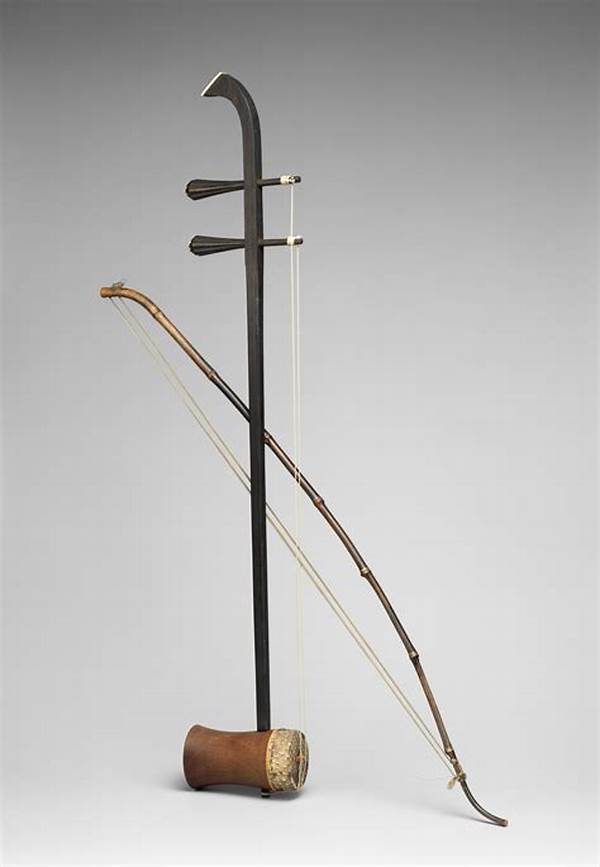Imagine sitting in a vast concert hall, your anticipation palpable as the lights dim. Suddenly, the stage illuminates, and a musician delicately cradling an erhu appears. As the bow begins to move, the instrument produces a hauntingly beautiful melody that fills the air, caressing your ears with its evocative sound. Welcome to the world where the ancient meets the contemporary, where the Chinese traditional music instrument erhu is featured in global concerts, captivating audiences worldwide.
Read More : Organ Musical Instrument That Shaped Western Liturgical Traditions
While Western audiences are accustomed to familiar string instruments like the violin or cello, the erhu offers a unique aural experience that stands out with its rich, emotive sound. Recently, this two-stringed marvel has been making waves on the global music stage, fascinating both seasoned classical music lovers and new generations of music enthusiasts alike. Read on to discover how the erhu is charming its way into the hearts of global concertgoers and why it should be on your music radar.
The Rise of the Erhu on Global Stages
In recent years, the erhu has progressively gained attention at international music festivals and concert halls. The rise of this traditional Chinese instrument isn’t merely a passing fad but rather a testament to its universal appeal. What sets the erhu apart is its unique capacity to convey emotions through its sound, which often evokes imagery of serene landscapes or poignant moments.
Bolstered by collaborations with Western orchestras, the erhu’s presence is becoming increasingly prominent. Artists and musicians have been keen to integrate the erhu into their repertoires, blending it seamlessly with different genres and giving traditional Chinese music a new dimension. This trend illustrates not only the versatility of the erhu but also its powerful role as a bridge between cultures.
Why the Erhu is Capturing Hearts Worldwide
The erhu’s significance in global concerts can be attributed to its dynamic range of expression. Unlike the rigid formalities often associated with classical music, the erhu brings an element of storytelling that can resonate with people from diverse backgrounds. Its music is often described as flowing, with notes that seem to ebb and swell like waves, allowing listeners to drift into their own imaginations.
Furthermore, artists like Wu Man and others have ventured into various musical styles, showing how the erhu can complement different soundscapes. This versatility makes it an attractive option for concert programmers aiming to offer something refreshing and culturally enriching to their audiences.
Understanding the Cultural Appeal of the Erhu
To truly appreciate the erhu featured in global concerts, one must understand the historical and cultural roots that have shaped this instrument. Originating over a thousand years ago during the Tang Dynasty, the erhu was initially used to entertain guests in imperial courts. Its history is as rich and resonant as the sounds it produces.
In contemporary settings, the use of erhu in global concerts acts as an exploration of cultural harmony. It invites listeners, regardless of their cultural background, to engage firsthand with an essential component of Chinese heritage. Moreover, its minimalistic design—just two strings and a bow—is a reminder that simplicity can lead to profound beauty.
Read More : Chinese Traditional Music Instrument Yangqin Blending With Symphonies
Testimonials from Global Music Enthusiasts
Although the erhu may look deceptively simple, its mastery requires skill and dedication. Stories from musicians who have embraced the erhu often reflect a deep, personal connection to Chinese culture, even if they do not originate from China. Testimonials frequently illustrate how playing or listening to the erhu can be a transformative experience, a universal musical language that speaks to the heart.
Events Celebrating the Erhu Worldwide
To celebrate the influence of the erhu on the world stage, numerous global events have showcased this exquisite instrument. From international music competitions to specialized concerts, the erhu is increasingly being spotlighted for its distinct sound and cultural significance.
Unveiling the Future of the Erhu
So, what lies ahead for the erhu as it continues to make its mark on global stages? The future looks promising, marked by increased interest in its integration into modern music genres. Artists are experimenting with digital effects and innovative arrangements, showcasing the erhu’s flexibility and contemporary relevance.
Summary: Embracing the Erhu’s Global Influence
As the erhu continues to captivate audiences across the globe, it brings a piece of Chinese culture to international stages. Its rise is not only a testament to its singular charm but also an invitation for global audiences to embrace diversity in music. The ongoing story of the erhu featured in global concerts suggests an exciting journey ahead, full of possibilities and new harmonies waiting to be discovered.
With each bow stroke on its two strings, the erhu proves that sometimes, the most poignant tales are told without words, inviting everyone to embark on a musical voyage, one concert at a time.
